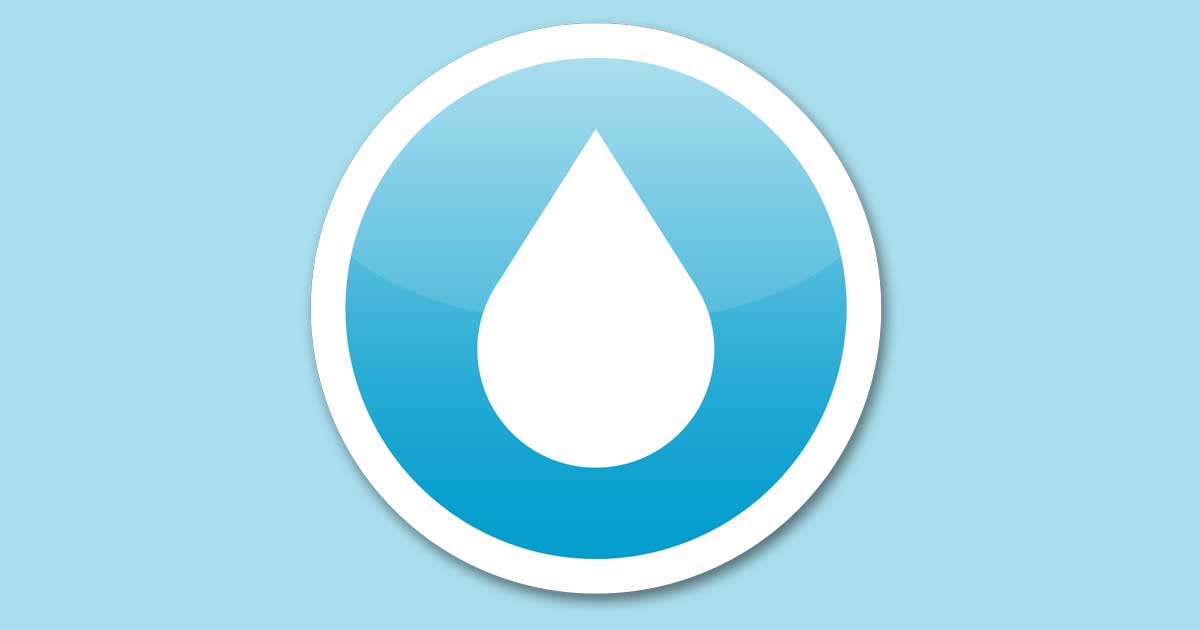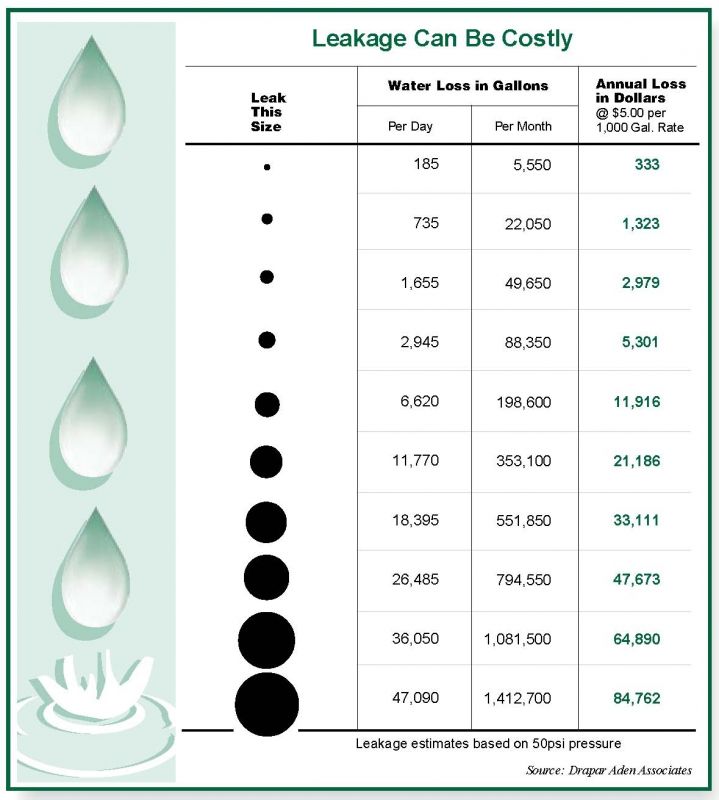Please click here to view Mauriceville MUD's Water Conservation report for 2019.
Why Conserve Water?
It’s Always Raining In Southeast Texas. Why Should I Conserve Water?
You wouldn’t leave your faucet on if it’s not in use would you? Essentially, that’s what wasting water does. With a leak or when you waste water, you’re paying for water that you’re not using. While it may not seem like much, it all adds up!
Water Is A Precious Resource
Have you thought about how water gets to your faucet? It takes a lot of resources to bring treated water from the lakes, rivers and groundwater to each one of our customers all day, every day. Because it costs money to bring this treated water to you, using water efficiently allows us to plan your water supplies better, saving us (and you) money.
Many Uses Creates The Need To Share
We use water in many different places in our every day life, including drinking, recreation, firefighting, industry, and almost everything else we do. Using water wisely helps us manage our resources effectively so we have water for all our different uses.
High Summer Use Creates Need For Conservation
Water use typically more than doubles during the summer because of outdoor water use. When a lot of people increase their water use during the same time period, “summer peaking” occurs. High water use during short periods of time is a concern because we are using stored water from reservoirs faster than rain replaces it.
Save Money
You still pay for each drop of water in your home, whether you use it or not. By using water wisely and eliminating leaks, the extra water you save means money in your pocket.
Outdoor Water Conservation
Using water wisely is especially important during the summer. Many of our customers double or triple their winter water use in the summer months. A majority is used for lawns and gardens, and most of this could be maintained with 25% to 40% less water!
General Outdoor Conservation Tips
- Use a broom instead of a hose to clean your driveway and sidewalk.
- Wash your car at a car wash that recycles water, or using waterless car wash.
- If you wash your own car, use a hose nozzle and turn off the water while you soap up your car. Use phosphorous-free soap. It’s better for the environment.
- Direct downspouts toward shrubs or trees.
- Bathe your pets outdoors in an area in need of water.
- Compost kitchen scraps, lawn clippings and garden waste – they’re perfect for homemade compost, which your soil will love. It also helps retain water and reduces erosion and weed growth, which compete for water and nutrients.
Sprinklers
- Select a sprinkler that releases water slowly and close to the ground rather than one that releases a mist that tends to evaporate quickly.
- Adjust sprinklers so you don’t water the house, sidewalk, or street.
- Fix broken, clogged, sunken or tilted sprinkler heads.
Irrigation
- Efficient water use is especially important during the hot summer months when as much as 50 percent of home water use is for watering lawns and gardens.
- Water your lawn about 1″ a week, including rain, in temperatures below 85 degrees. Hotter temperatures require 1 ½” of water per week for landscaping. As an easy rule-of-thumb, you can figure out how long it will take to get one inch of water by using the “Tuna Can Trick”:
- Place 3 to 5 empty tuna or cat food cans at varied distances from the sprinkler.
- After 15 minutes, stop the water and check the water level in the tuna cans. If the cans are full, your lawn is properly watered. If they ran over, you’re watering too much.
- Note the time it took to fill the cans and that’s how long you should water your lawn.
- Use a timer when watering. It is easy to forget and over water.
- A hearty rain can eliminate the need for watering for up to two weeks — add a rain sensor and make weekly changes to your irrigation controller to account for weather changes.
- Water your lawn in the early morning or in the evening, when temperatures are cooler and water isn’t lost to evaporation. Don’t water on windy days because water can be blown away from plants. If your sprinklers water the sidewalk, driveway or street, that can be another 300 gallons down the drain!
- Before watering, check the soil below the surface. Just because the surface is dry doesn’t mean that the roots need water. There may be moisture below the surface.
- Water the roots and soil around plants rather than spraying the leaves and flowers.
- Deep soak your lawn. Water infrequently but thoroughly so that moisture soaks deep to the roots. This encourages deeper, healthier root systems and allows the lawn to go without irrigation for a longer period of time.
- Alternately, you may find that due to soil conditions or slopes in your yard, water will run off if you water for extended periods. Several short repeated watering cycles may be necessary to avoid runoff.
- Add soil amendments before you plant, such as compost or peat moss, to improve water retention and soil quality. Use mulch generously. It slows evaporation, keeps plant roots cooler and controls weeds.
- Adjust your mower to a higher setting. Consider leaving clippings on the lawn. Longer grass blades provide shade and help hold in moisture longer.
Landscape Maintenance
- All landscapes require regular maintenance. Pruning, efficient watering and pest control will keep plants healthy and your water bill lower. Weed regularly since weeds compete with your grass for water and nutrients. Fertilize only the minimum amount needed. Extra fertilizer actually increases water consumption.
- Once a year aerate your lawn, particularly if your soil is compacted. This will improve the lawn’s health and ability to absorb water.
- Use native plants, check out what is good for your landscape at www.plantnative.org
Pool & Spas
- Install covers on pools and spas to reduce evaporation.
- Try to keep the water level of your pool halfway up the skimmer opening. Overfilling the pool stops the skimmer from working as well and wastes water.
- A pool cover is a great way to reduce evaporation and the need to regularly top up your pool’s water level. Without a cover, more than half the water in your pool can evaporate over a year.
- Use a grease pencil to mark the level of your pool at the skimmer. Check it 24 hours later. Your pool should lose no more than 1/4 inch each day.
Planning for a Garden
- Review Water-smart planning starts with groups of plants according to water, sun and soil requirements and ends with reduced maintenance through the use of simple shapes. When planting new garden beds, group plants with similar watering needs together.
- If lawn is installed, consider using a drought-, disease- or wear-tolerant variety. Place it where it can be watered and maintained efficiently. Avoid placing lawns on slopes or in areas that are unused or are hard to maintain.
- Use native plants and grasses that will enhance the site and minimize long-term water consumption while keeping weeds and pests to a minimum. Group plants into high, moderate and low water-using zones. Take advantage of water captured in ponds, swales, rain barrels or cisterns for significant water savings. High-tech watering systems make watering easier, but not necessarily more efficient. If you install an automatic system, be sure to adjust for seasonal changes and consider using a rain or soil sensing shut-off switch.
- Watering more than your soil can absorb causes runoff. This not only wastes water, but also carries fertilizers and other chemicals into the sewer system. To avoid runoff, water in smaller amounts in repeated intervals.
Indoor Water Conservation Tips
General
- Locate your master water shut-off valve in case a pipe bursts and you need to shut if off to avoid flooding
- Repair leaks. Even small leaks can waste 100 gallons of water each week.
- Insulate your water pipes. You’ll get hot water faster.
Kitchen
- Install an instant water heater on the kitchen sink so you don’t have to let water run while it heats.
- Garbage disposals require a lot of water to operate properly. Start a compost pile instead.
- Keep a pitcher of water in the refrigerator instead of running the tap for cold drinks.
- Wash fruits and vegetables in a pan filled with water or a partially filled sink instead of under running water.
- Soak your pots and pans instead of letting the water run while you scrape them.
- Run the dishwasher only when full.
- When washing dishes by hand, fill one sink with wash water and the other with rinse water.
- When it’s time to replace your dishwasher, invest in an energy efficient dishwasher.
Laundry
- Run the washing machine only when full.
- When doing laundry, match the water level to the size of the load.
- Invest in new water-saving appliances, like high-efficiency washing machines that can save up to 50% on water use.
Bathroom
- Invest in high-efficiency toilets. Invest in high-efficiency faucets and showerheads.
- Keep showers under 5 minutes.
- Turn off the water while brushing your teeth.
- Turn off the water while you shave.
- Don’t flush tissue, cigarettes, or small bits of trash down the toilet.
- Toilet tank leaks can be silent – but costly! From time to time, use a dye tablet in the tank to check for leaks. You may save 200 gallons a month if you find and repair a leak
Comments are closed.

 Water Loss Chart
Water Loss Chart